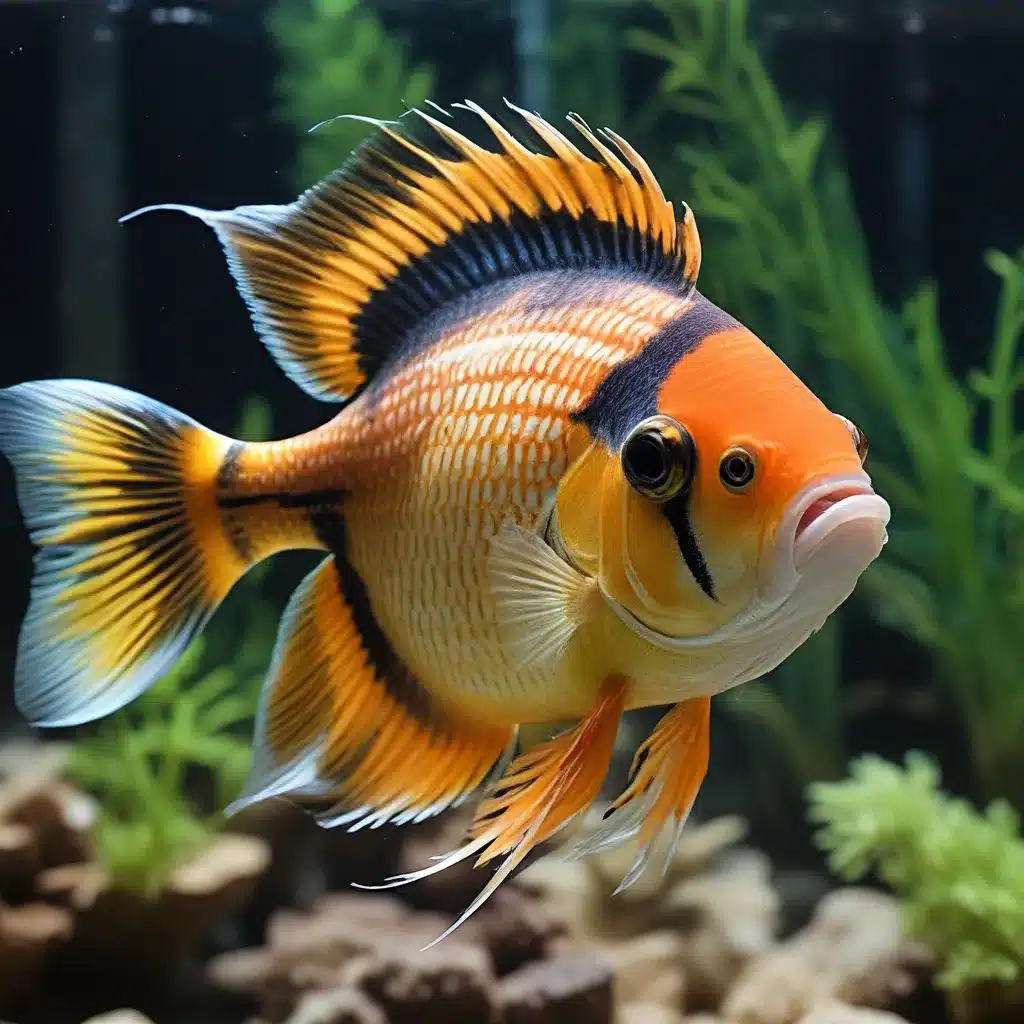
Understanding the Needs of Aquarium Fish
Keeping aquarium fish as pets can be an incredibly rewarding and educational experience. However, to ensure their long-term health and happiness, it’s essential to understand the unique needs and behaviors of different fish species. Whether you’re a seasoned aquarist or just starting your fishy adventure, delving into the fascinating world of aquarium fish can open up a whole new realm of captivating interactions and insights.
One of the key factors in providing excellent care for your aquatic companions is recognizing their individual personalities and behavioral quirks. King Aquarium enthusiasts know that fish, like any other pets, have their own distinct ways of expressing themselves and interacting with their environment. By observing and understanding these behaviors, you can create a thriving and harmonious aquarium ecosystem.
Exploring Fascinating Fish Behaviors
When it comes to keeping aquarium fish, the true joy often lies in witnessing their fascinating behaviors. From the graceful swimming patterns of schooling tetras to the bold and curious nature of bettas, each species has its own set of intriguing characteristics that can captivate their human caretakers.
One of the most rewarding aspects of aquarium ownership is the opportunity to observe and learn about your fish’s unique personalities. Bettas, for example, are known for their vibrant colors, flowing fins, and territorial behavior. These captivating fish can even recognize their owners and respond positively to gentle interaction. Watching a betta flare its fins, build a bubble nest, or engage in a dance-like display can be a mesmerizing experience for aquarium enthusiasts.
Another group of fish that exhibit fascinating behaviors are the cichlids. These diverse and often highly territorial fish can engage in a wide range of behaviors, from intricate courtship rituals to fierce territorial disputes. Observing a pair of cichlids establish and defend their territory, or witnessing the parental care they provide for their young, can be a true window into the complex social dynamics of the aquatic world.
Schooling fish, such as tetras and danios, offer a different kind of behavioral delight. Witnessing these fish move in synchronized, graceful patterns can be both calming and mesmerizing. The way they respond to changes in their environment, react to the presence of predators, or interact with one another can provide endless fascination for aquarium enthusiasts.
Tailoring Care to Species-Specific Needs
While observing the behaviors of your aquarium inhabitants is undoubtedly captivating, it’s crucial to ensure that their physical and environmental needs are also met. Each fish species has unique requirements when it comes to factors like water parameters, tank size, and dietary preferences.
For example, goldfish are a popular choice for beginner aquarists, but they have specific needs that must be addressed. Contrary to the common misconception, goldfish do not thrive in small bowls. Instead, they require spacious aquariums or outdoor ponds to accommodate their active nature and waste production. Providing the appropriate water conditions and filtration system is essential for maintaining the long-term health of these charming fish.
On the other hand, marine fish often have more specialized requirements, such as the need for precise water chemistry, complex lighting systems, and the introduction of live rock or coral to mimic their natural reef habitats. Aquarists who venture into the realm of saltwater aquariums must be prepared to invest time, resources, and diligent research to ensure the well-being of their finned friends.
Establishing a Thriving Aquarium Ecosystem
Achieving a truly captivating and healthy aquarium goes beyond simply housing the right fish species. It’s essential to understand the delicate balance of the entire ecosystem and how each component works together to create a harmonious environment.
One of the crucial elements in maintaining a thriving aquarium is the nitrogen cycle. This natural process, facilitated by beneficial bacteria, is responsible for converting fish waste and other organic matter into less toxic compounds. By establishing a well-cycled tank, aquarists can ensure that their fish are not subjected to the harmful buildup of ammonia or nitrites, which can have devastating effects on their health.
Equally important is the role of live plants in an aquarium. Not only do they add visual interest and depth to the overall aquascape, but they also play a vital role in maintaining water quality. Aquatic plants absorb excess nutrients, oxygenate the water, and provide hiding spots and shelter for the fish. Incorporating a variety of hardy, low-maintenance plants can significantly enhance the health and stability of your aquarium ecosystem.
Conclusion: Fostering a Rewarding Aquarium Experience
Exploring the fascinating behaviors and care requirements of aquarium fish can be a truly rewarding and educational experience. By understanding the unique needs of different species, tailoring your aquarium setup accordingly, and fostering a thriving ecosystem, you can create a captivating and harmonious environment for your finned friends to thrive.
Whether you’re captivated by the vibrant displays of bettas, the intricate social dynamics of cichlids, or the mesmerizing schooling patterns of tetras, embracing the diversity and complexity of aquarium fish can open up a world of wonder and delight. With patience, dedication, and a passion for learning, you can become a skilled aquarist, providing your aquatic companions with the best possible care and creating an aquarium that is a true source of joy and fascination.

